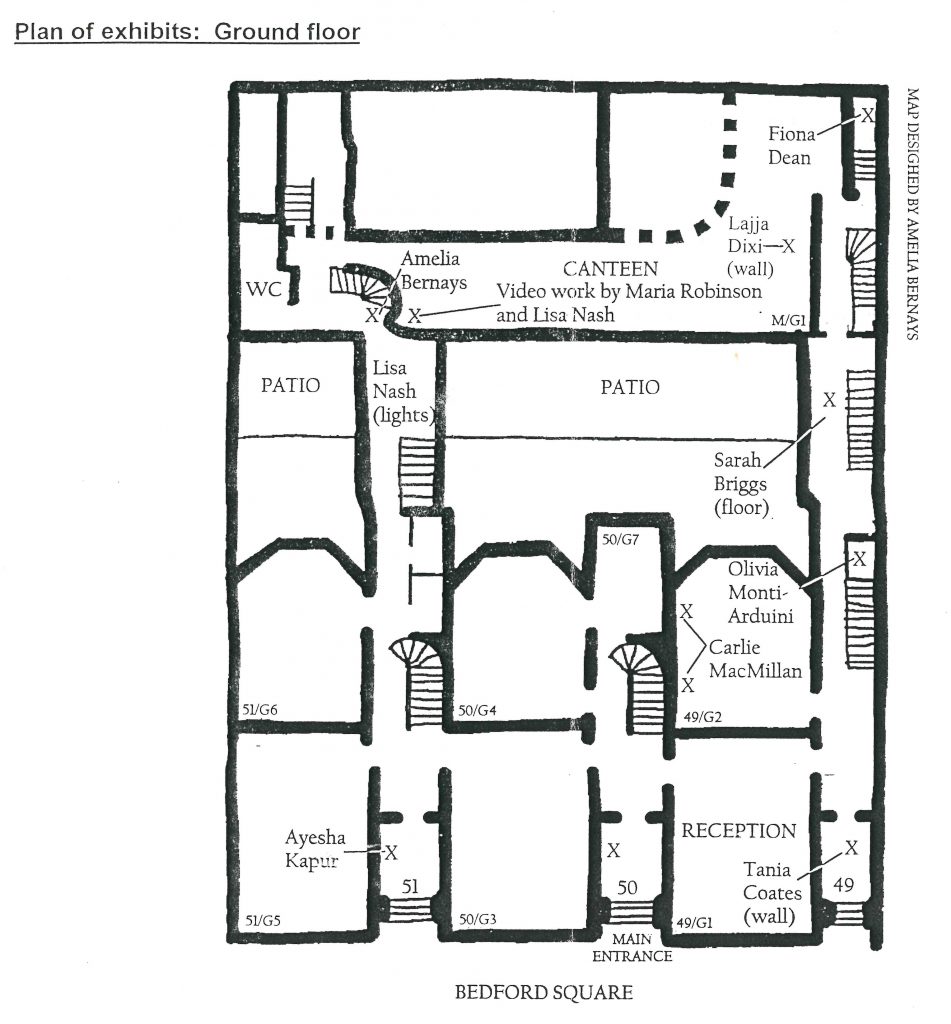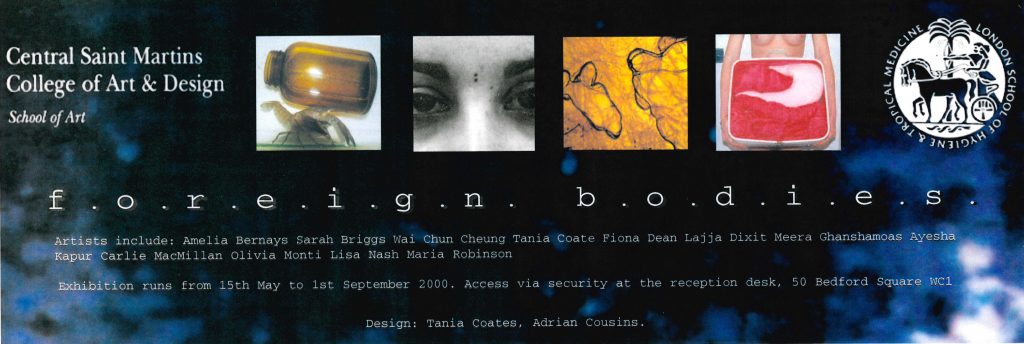The LSHTM Contemporary Arts Programme
The LSHTM Archive recently catalogued and made available to researchers papers relating to the LSHTM Contemporary Arts Programme. The collection consists of material relating to commissioned artworks and exhibitions that took place at the School between 2000-2005.
Tony Fletcher, who has been at the School since 1992, compiled the collection. His principal research interests are environmental epidemiology and environmental health risk assessment. Fletcher organised the LSHTM Contemporary Arts Programme in 2000 with the approval of the School’s Board of Management.
The initial purpose of the programme was to commission or purchase sculptures and pictures. However, the Keppel Street building presented relatively few suitable spaces for placing or hanging art. Instead, emphasis shifted towards commissioning works that fitted, both in terms of the themes of the School and the architecture of the building. The programme also aimed to create opportunities for artists to respond to and engage with specific aspects of research which were taking place at the School.
In parallel the School organised a series of exhibitions with the help of Pam Skelton, Central Saint Martins College of Art & Design. Art students from CSM were invited to prepare new works for the first two LSHTM exhibitions, Foreign Bodies 2000 and Foreign Bodies 2001. Subsequently, the Hygiene – the art of public health and Smog exhibitions showcased more ambitious thematic presentations that included major established artists.
Commissioned Artworks
Susan Brind, ‘bad air [mal’aria]’
Susan Brind’s 2001 installation focused on the School’s research into malaria. Referencing research from the Classical Period to the 20th Century, ‘bad air [mal’aria]’ distributes gold leaf text around the walls of the Keppel Street building.

Ideas created by a delirious mind and fevered body, factual information and beliefs of the period, merge as a cycle of thoughts. The proximity of rational, objective texts to the more emotive ones generates a poetic space for the viewer or reader.
Gary Perkins
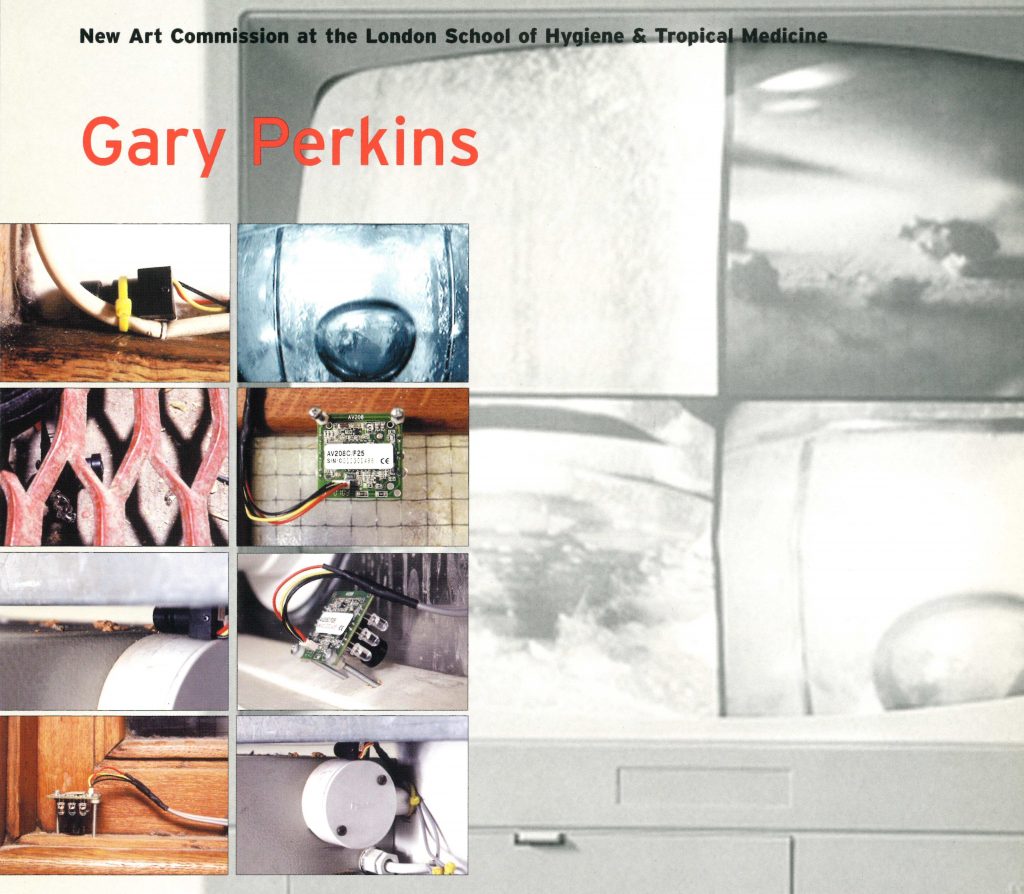
Gary Perkins’ video installation was in place 2001-2006. The work echoed the levels of scrutiny and study that characterises the School. Sixteen miniature surveillance cameras relayed a series of oblique and oddly beautiful images, researching the very fabric of the building. A security-style monitor in the foyer then displayed these images.
Martina Kramer, ‘Ramifications’
Martina Kramer’s commission in the main stairwell of the Keppel Street building opened in May 2002. Her large scale work, ‘Ramifications’, comprises two complementary series of paintings. The installations utilise fractal geometry and feature paintings on shiny stainless steel.

They create an irregular whole built up from regular and symmetric basic forms. The movement of light makes the surface of the work responsive. It reflects both literally and metaphorically the vertical passage of the people using the stairs.
Exhibitions
Foreign Bodies 2000 & Foreign Bodies 2001
Foreign Bodies 2000 and Foreign Bodies 2001 were exhibitions of site-specific artworks hosted at the School by students from the BA (Hons) Fine Art Course at Central Saint Martins College of Art & Design1.

Fourteen students exhibited artworks created in response to, or inspired by, the research and teaching at the School. The works were displayed in buildings at Keppel Street and Bedford Square.
Hygiene – the art of public health

The Hygiene – the art of public health 2002 exhibition focused on interpretations and responses to ‘hygiene’ by artists2. The works explored relationships not only with the research undertaken at LSHTM, but its architecture, history and collections. The exhibition provided the opportunity to consider hygiene through the lens of visual artists in an institution dedicated to medical research and public health.
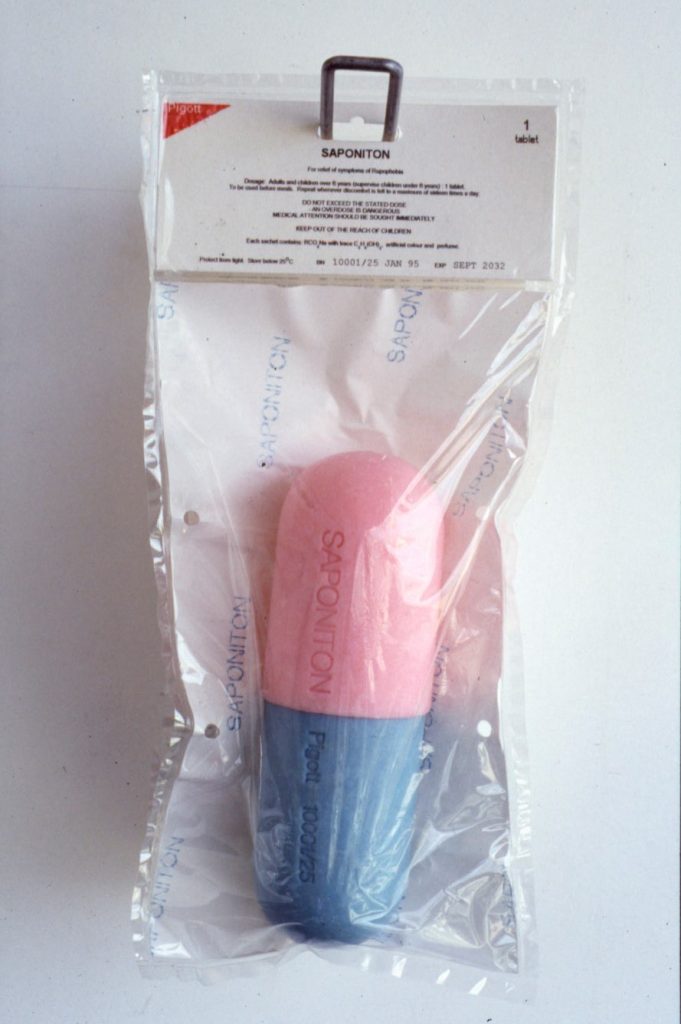
Hadrian Pigott examines the complex of personal, social and commercial issues that collide in the Western bathroom, creating a number of works that raise questions about commercial colonialism and the addictive nature of soap.
For Hygiene, Pigott presented his work ‘SAPONITON’; a large soap bar made in the form of a drug capsule and presented in medical packaging.
Smog
Smog ran from December 2002 to February 2003. The exhibition was designed to commemorate the 50-year anniversary of London’s Great Smog. For a week in December 1952, London suffered its worst ever smog.
Levels of sulphur and particulates reached lethal concentrations, leading to the deaths of up to 12,000 people. Seven artist’s3 presented new work that reflected their responses, impressions and fears related to fog, smog, pollution, suffocation and reduced visibility.
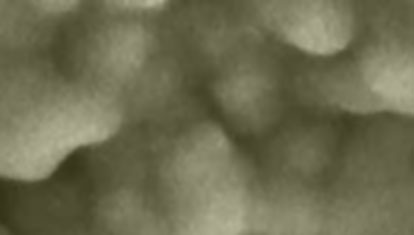
The Healers
The Healers exhibition was organised as part of the Africa 2005 season. Artists4 reflected on and responded to the scientific and sociological work of the School to forge new perspectives on healing and medicine in Africa.
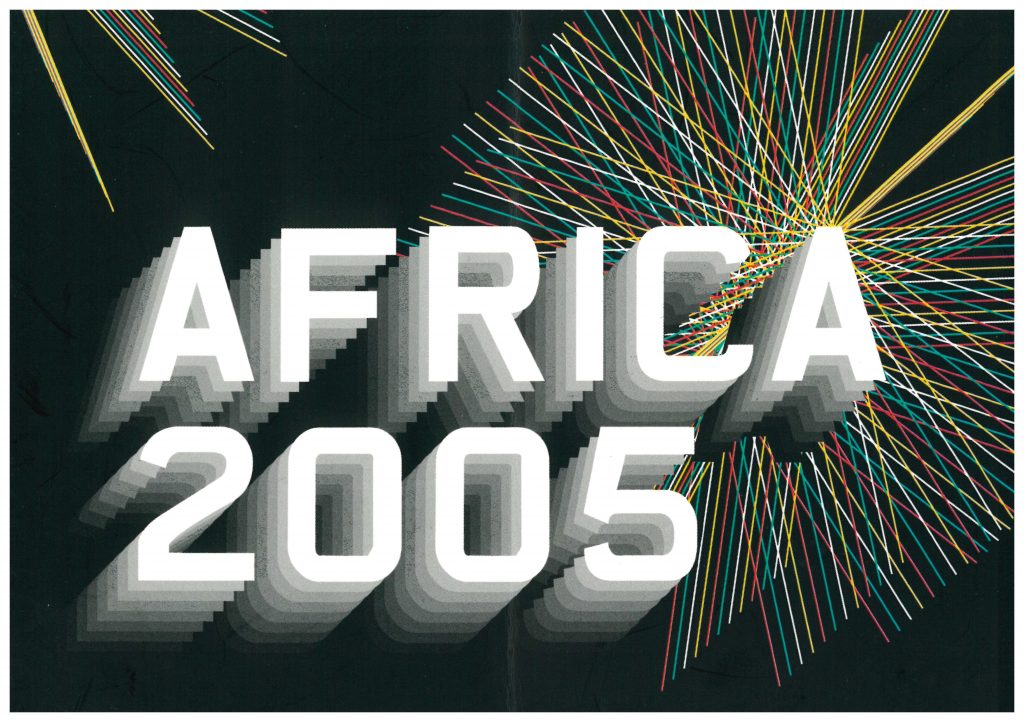
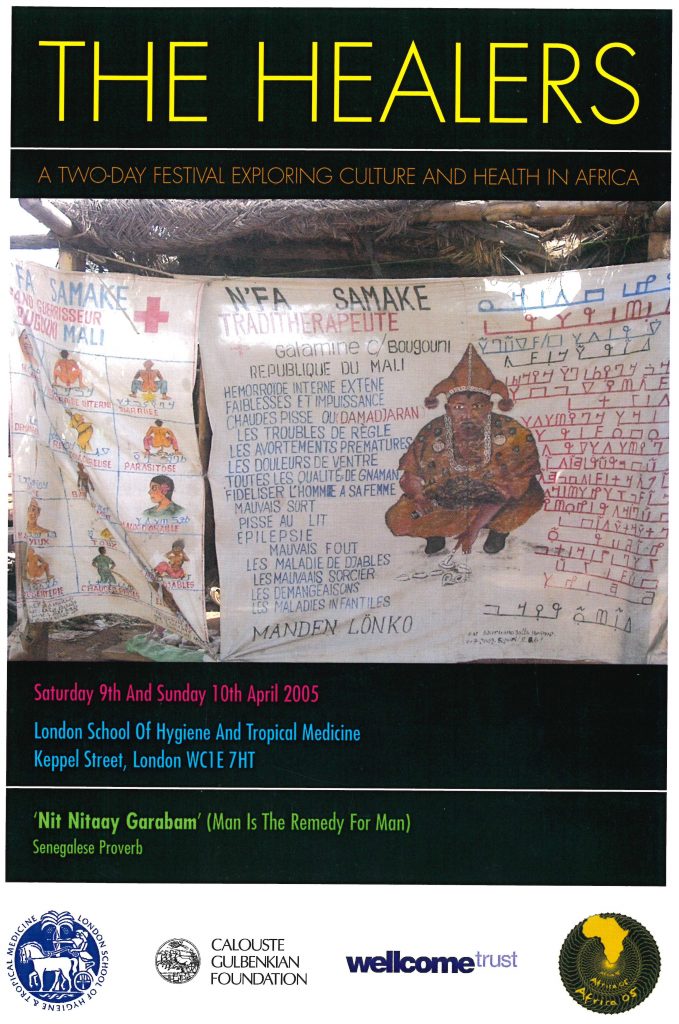
Themes included death, rebirth, traditional use of art for healing, ritual, representations of African cosmology and depictions of indigenous healing.
The exhibition culminated in a two-day festival which brought together academics and artists in a reciprocal exchange and mutual learning. The aim was to challenge conventional public health specialists’ approaches to art and also artists’ perspectives on science, in order to catalyse new and dynamic perspectives and potential for collaboration between the medical profession and artists both in Africa and within the diaspora.
You can explore the collection here.
- Foreign Bodies 2000 artists: Amelia Bernays, Sarah Briggs, Wai Chun Cheung, Tania Coate, Fiona Dean, Lajja Dixit, Meera Ghanshamoas, Ayesha Kapur, Carlie MacMillan, Olivia Monti, Lisa Nash, Maria Robinson
Foreign Bodies 2001 artists: Bruno Para Agoplan, Eleonora Agulari, Carol Burtt, Duna Carbonell, Tania Coates, Rebecca Evanson, Haroulla Filakti, Seraina Mueller, Niamh Murray, Alexandra Navratil, Natalie Papapmichael, Simone Reis, John Shea, Benny Soo Tho ↩︎ - Hygiene artists: Fernado Arias, Jordan Baseman, Christine Borland, Susan Brind, Andrew Carnie, Sarah Cole, Naomi Dines, Paola Junqueira, Shaheen Merali, Katharine Meynell, Gary Perkins, Hadrian Pigott, Nina Saunders, Pam Skelton, Alistair Skinner, Julian Walker ↩︎
- Smog artists: Beth Harland, Richard Layzell, Caroline List, Chris Meigh-Andrews, Jacqueline Morreau, Mario Rossi, Mare Tralla ↩︎
- The Healers artists: Loulou Cherinet, Gera, Cyprien Tokoudagba, Zwlethu Mthethwa, Tracey Rose (Artist in residence), Abdoulaye Konate (Artist in residence) ↩︎






